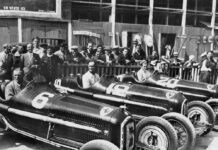Seeing a photograph of a previously unknown car for the first time can be quite exciting, but it’s never as rewarding as actually seeing the machine in the metal for the very first time. So it was for me a few weeks ago at the annual London Concours, where I came across a vehicle that I’d known about for some time, but had never seen in the flesh until that event.
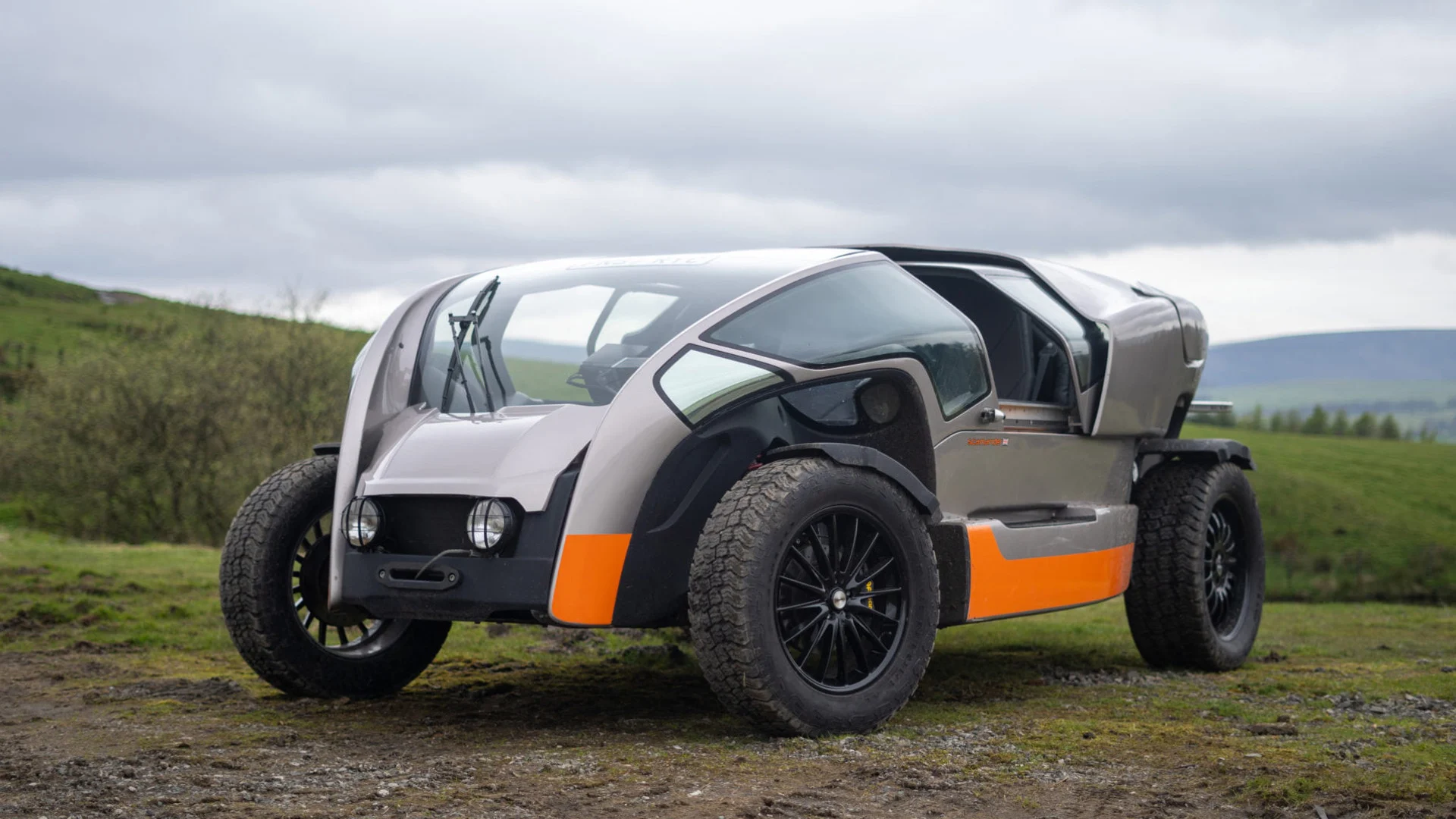
And this was no ordinary vehicle. It immediately commanded attention and smacked you between the eyes with its striking appearance and outlandish styling. Incorrectly, but quite understandably, presented as a TVR Scamander, this one-off vehicle was an amphibious prototype, equally as capable on water as on (or off) the road, was conceived, developed, and built by the former one-time boss of TVR Cars - the charismatic, but sadly now deceased Peter Wheeler.
Built for his rural retirement in remote northern moorland in 2007, after Wheeler had sold off TVR to a wealthy but clueless young Russian entrepreneur, the large off-road amphibious Scamander could seat three, with a central driving position beneath a sliding canopy encased by distinctive half-hull/half aircraft fuselage coachwork. Initially powered by a modest 2-litre mid-mounted motor which proved too inadequate in practice, the Scamander’s powertrain was quickly upgraded to a more potent Ford V6 engine, feeding power to the rear wheels only via an automative transmission.
To compensate for the lack of all-wheel-drive, Wheeler employed tailor-made 21-inch alloy rims in bespoke 35-inch tyres. Respected motoring scribe and Scamander campaigner Harry Metcalfe helped Wheeler’s son to recommission the wild floating vehicle which had lay dormant for 12 years following Peter Wheeler’s passing. Metcalfe was keen to showcase the Scamander at Goodwood for the Cartier ‘Style et Luxe” concours, but alas, there was never a suitable class for the car to be previewed, hence it making its public debut at the London Concours earlier this month.
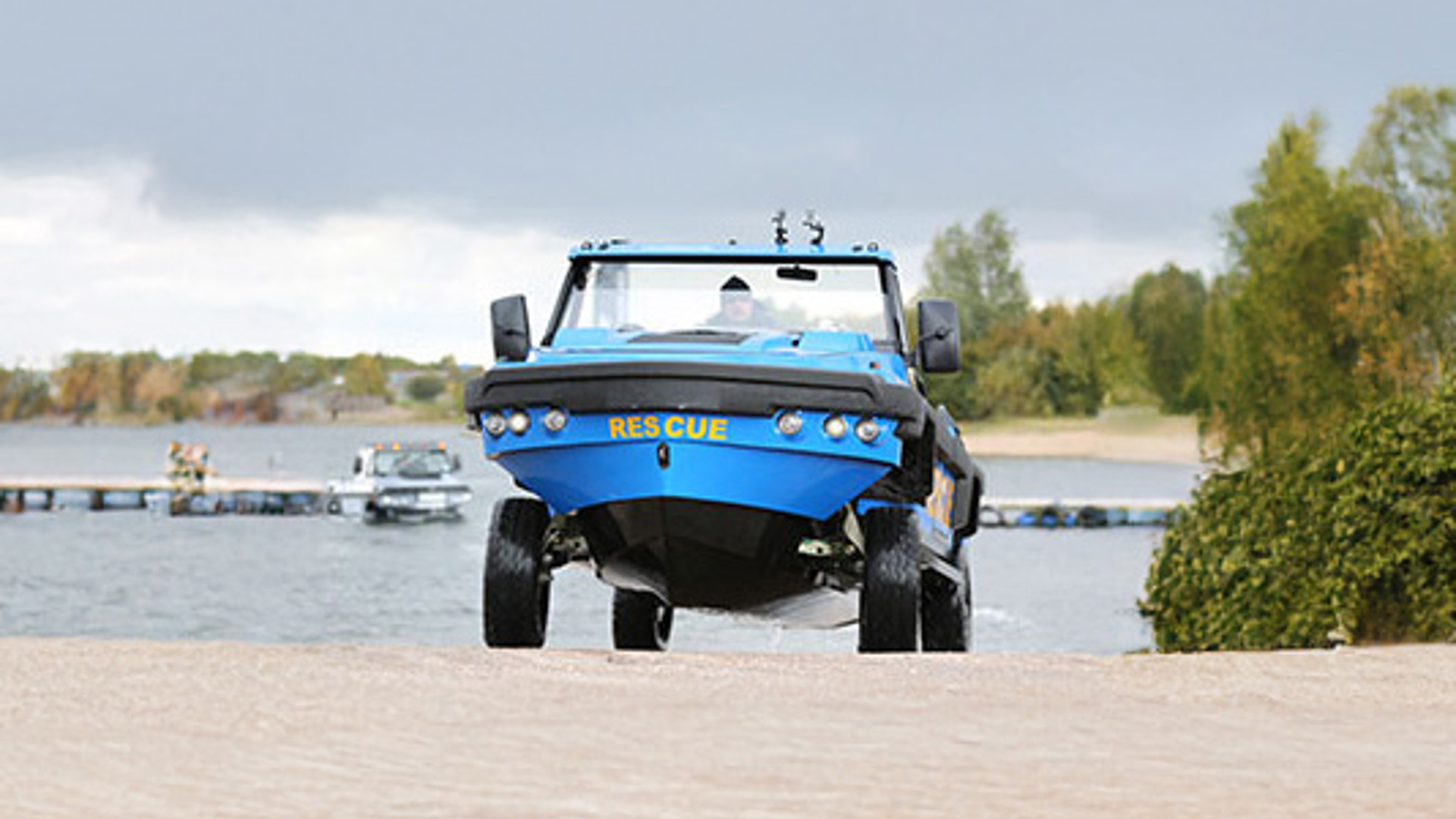
Had the Scamander ever made production, it’s closet rival would have been the menacing Gibbs Humdinga. Initially created by sporting amphibious specialist Gibbs for military use, the large Humdinga from 2012 had higher performance and robust qualities for both the water and the land than the Scamander. Gibbs first launched its sporting soft-top Aquada sports car/boat in the late noughties and still offers the Humdinga today, only now it mainly focuses its activities on its unique range of lively amphibious quads.
Closer to home, and considerably more affordable than the Gibbs, was the 4×4 Amphijeep Surf built by long established West Sussex kit car entrepreneur, Tim Dutton. Dutton launched (in every sense of the word) his first amphibious Amphijeep (the Ford Fiesta-derived Marina) around 20 years ago, and in 2011 he followed up his popular Fiesta-based floating kits with the more versatile Surf, based on the off-road mechanicals of the Suzuki Jimny 4×4. 55 years of building his own amphibious vehicles has meant Dutton has been making these cars longer than any other manufacturer in history, but he his finally retiring after selling the rights to his strong-selling Amphijeep models earlier this year to a Polish concern
Dutton’s Amphijeeps were sold in complete turn-key form from his quayside Rope Walk, Littlehampton - facilities with his very own slip road enabling him to demonstrate the on-water capabilities of his Amphjeeps to perspective customers. Some years previously he had successfully proven their value by ‘driving’ an Amphijeep across the English Channel to France.
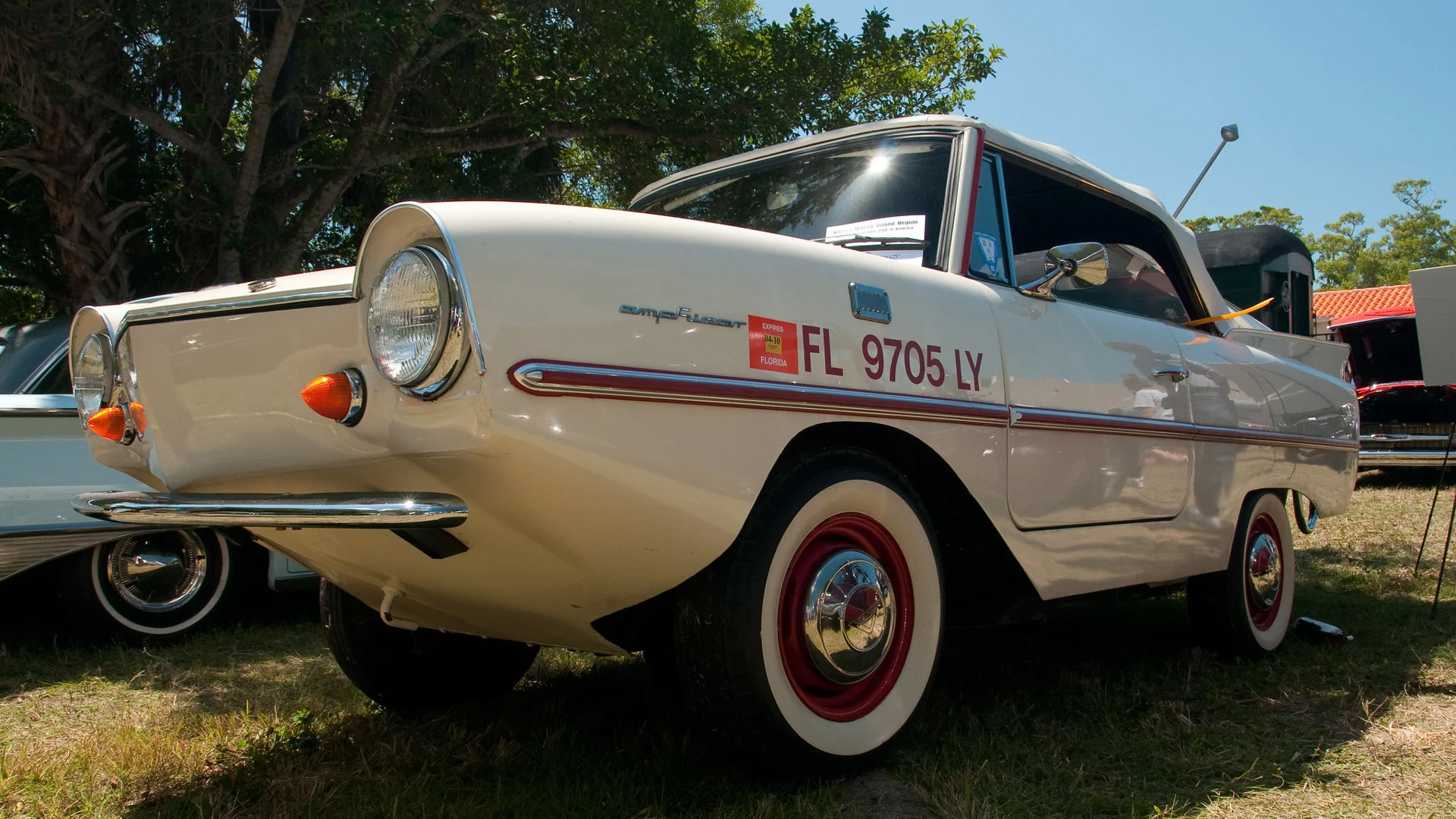
Built for a shorter time than Dutton’s amphibious machines, but arguably more widely known globally, was the German 1961-68 Amphicar 770. The oddly-styled half car/half boat Amphicar 770 was beset with problems right from the word go, which were never satisfactorily resolved during the vehicle’s seven-year production span.
The Amphicar’s bodywork was made of steel so it rusted very badly. This was hailed to poor door sealing, which let the water in, plus its rear-mounted 1,147cc Triumph Herald-sourced engine that also had a tendency to let in water and then conk out – not ideal when you’re stranded out on the water a long way from dry land!
The unusual choice of the 38bhp British Triumph engine (for a German car) did the Amphicar few favours as its was majorly underpowered and struggled with the car’s considerable weight. On dry land it had a top speed of just 65mph, with a 0-60mph time of a leisurely 42 seconds. In the water, the performance of the strange amphibious machine was no better, with a maximum potential of just 7.5 knots from its single rear propeller.
The Amphicar was the invention of prolific amphibious machine creator Hans Tippler, creator of the war-time Volkswagen Schwimmwagen. It first built at Karlsruhe from 1961, before production moved to Berlin by Deutsch Waggon und Machinenfabrik, where it remained in production through to 1965, but remained offered for sale up to 1968 to sell-off the vast remaining stocks.
Although less than 2,500 examples of this ungainly and eye-wateringly expensive 770 four-seater convertible were made during the car’s seven year production span, the Amphicar’s novelty and rarity make it a much sought-after classic today, despite it being neither very good as a car, not indeed as a boat.
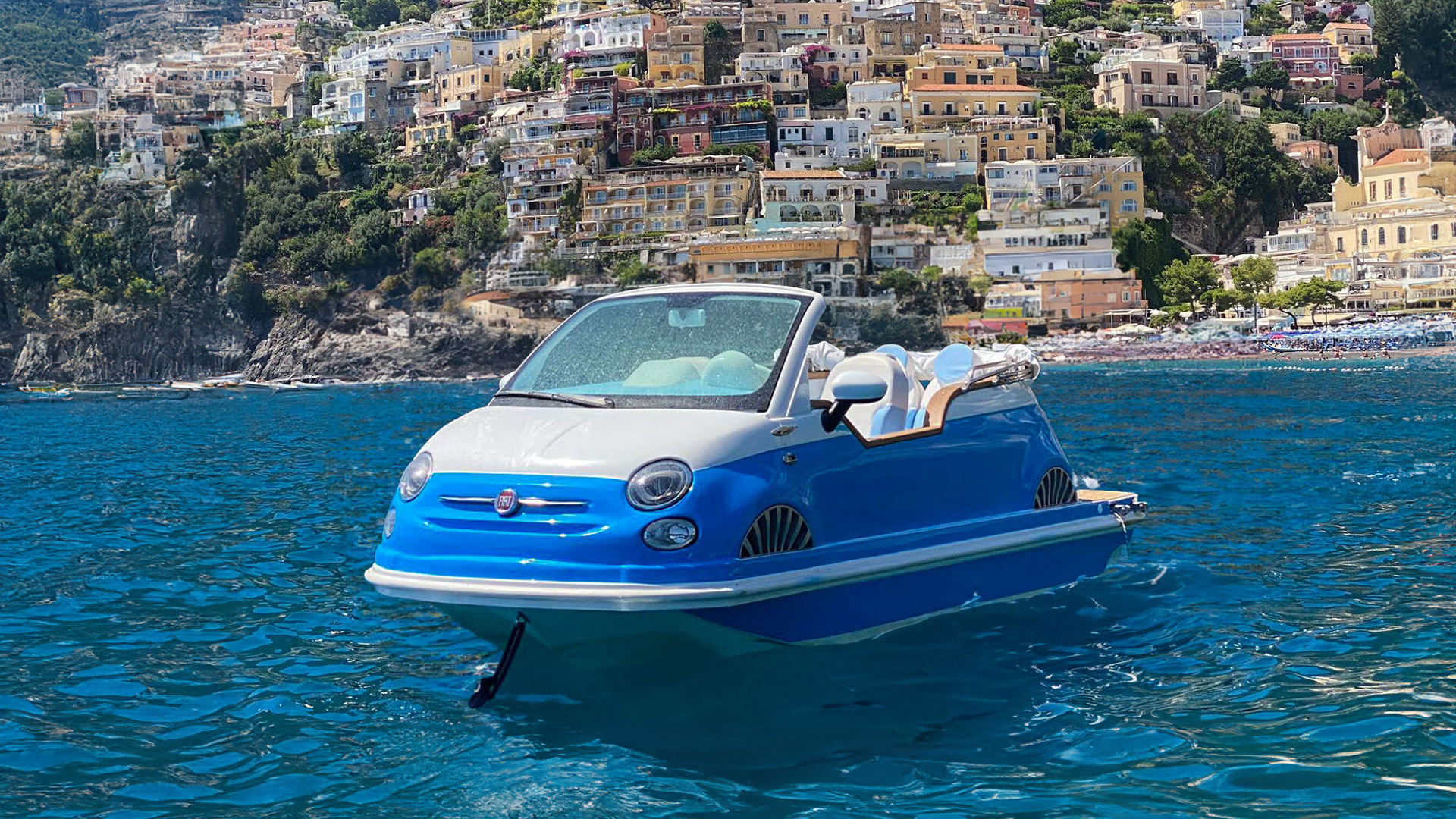
Looking much more promising is a new sea-worthy car based around the current Fiat 500. With Fiat’s support, Italian entrepreneur Antonio Pietro Maria Galasso has recently launched a limited run of road-going boats in the shape of a special Fiat 500.
The 500 Off-Shore’s engine develops 117PS (86kW) and allows the boat to reach 39 km/h. Externally, the vehicle looks like a Fiat 500 that’s had its sills cut halfway up to attach a boat hull and a removable roof to enjoy the open skies at sea and on the road. The interior is also arranged like the 500 due to the shape of its steering wheel, the circular instrumentation behind it, and the screen which sits at the top of the central console. LED lights, fog lights, a bilge pump, and an audio system come fitted as standard, with a hand shower and a double platform with ladder are among the options offered, ideal for a splash in the sea.
Offered for sale from around €110,000 (c.£93,500), the new floating Galasso Fiat 500 can also be rented for use at sea on the Amalfi Coast. Prices start at €150 (£127) for a 45-minute ride and go up to €1,200 (£1016) for a 90-minute ride featuring a tailored marriage proposal which even includes a professional photographer. Let the champagne corks pop and anchors away! Why, nothing says romance like an amphibious Fiat 500.
Report by Gary Axon for goodwood.com
Amphicar 770 image courtesy of Flickr




